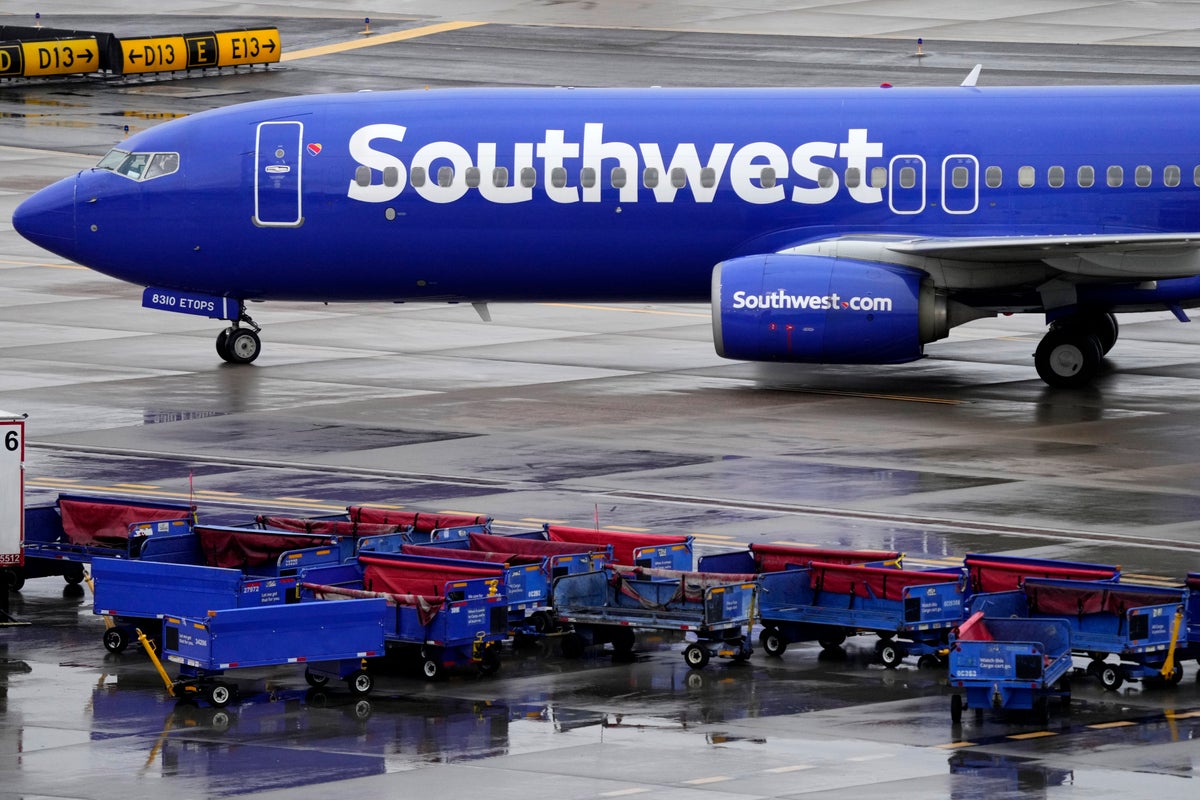
A pilots' union president has told Congress that Southwest Airlines' December meltdown happened because the airline grew too fast during the pandemic and didn't update critical technology, then botched the recovery including operating 500 empty flights while passengers were stranded over the holidays.
In prepared testimony for a Senate hearing Thursday, a top Southwest executive apologized again for the fiasco and said the airline is taking steps to avoid another breakdown, but he provided few new details about the breakdown.
The comments were contained in prepared testimony submitted to the Senate Commerce Committee, which took aim at Southwest as it began to probe disruptions that affect millions of air travelers every year.
“We know this won’t be the last snowstorm to hit this country. So let’s figure why Southwest’s operations collapsed and what needs to change so this never happens again on Southwest or any other airline," said the committee chair, Maria Cantwell, D-Wash.
Southwest and other airlines were hit by a winter storm on Dec. 21, but Southwest failed to recover when other carriers did. It canceled nearly 17,000 flights over a 10-day stretch, causing customers — likely more than 2 million of them — to scramble for other flights or cancel their travel plans. The breakdown has cost the airline more than $1 billion.
Chief Operating Officer Andrew Watterson said in prepared remarks that Southwest drew up a plan for an expected winter storm, but it was worse than forecast. Southwest struggled with deicing equipment and jet bridges in Denver and Chicago, eventually canceling most flights at those airports, which rippled out nationwide.
By Dec. 24, as the storm moved east, Southwest's ability to reschedule crews was in tatters, and pilots and flight attendants were stranded just like the passengers. It took another week for the airline to recover.
Watterson said Southwest has updated crew software and increased the ratio of employees to planes, and the airline is confident it will do a better job if hit again with mass cancellations.
Casey Murray, president of the Southwest Airlines Pilots Association, said the debacle was avoidable. He said unions had warned company leaders about problems with crew scheduling — it broke down during a smaller crisis in October 2021 — but failed to make necessary improvements. When the storm hit, Southwest didn't know where employees were, he said.
Murray suggested that the company was more focused on growth — adding 18 new cities during the pandemic.
“Managers’ overconfidence in their planning and a systemic failure to provide modern tools to employees doomed SWA’s recovery before the first snowflake hit the ground,” he said.
Murray also criticized the Dallas-based airline for giving $8.8 million in stock options to seven senior executives last week. He pressed Congress to make Southwest give a deadline for fixing its crew scheduling and provide details around its pledge to invest more in technology.







